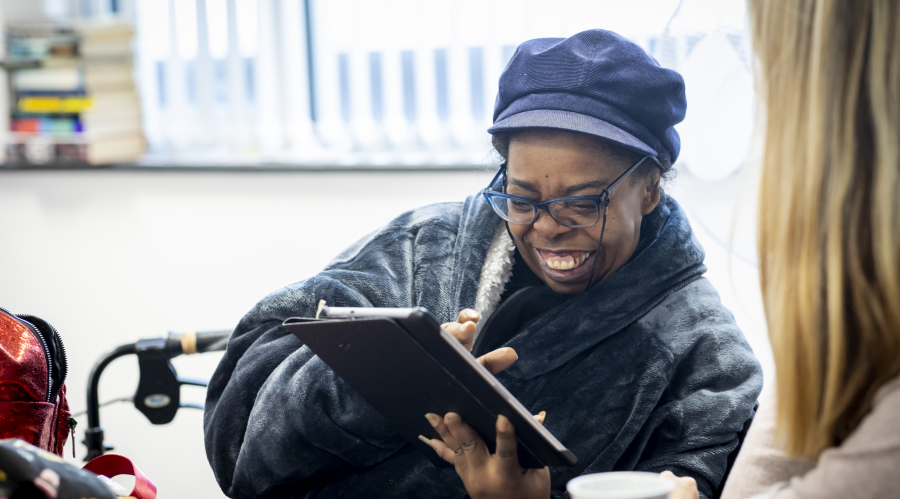By Emma Weston.
There’s been a lot of excitement about DSIT* Digital Inclusion Action Plan. It is a commitment of intent and, as it says on the tin, a series of actions that will “kickstart our drive to improve digital inclusion”(p6). Here’s what I like most about it:
1. It isn’t a strategy. Because “digital exclusion is complex and cross-cutting and needs an evidence-based and collaborative approach from government”. (p6) Statements and observations like this, which pepper the document, show that there will be listening, learning from established models and practices, consultation. It means strategy won’t be conceived in a vacuum or independently of those who will be tasked with delivering it on the ground; nothing about us without us.
2. There is A definition of digital inclusion, my capitalisation. This is significant because it signals an understanding that alignment with a common goal is a critical starting place.
3. There is a Joint Ministerial forward. Led by the SoS in DSIT, Rt Hon Peter Kyle MP, there are 4 other SoS signatories from Depts of Health and Social Care, Education, Work and Pensions, Housing Communities and Local Govt. It signals the ‘cross-cutting’ has already started.
4. There are 5 Actions and there are also Leadership Actions; the expert exchange programme is my favourite because it signals the valuing of expertise outside government.
5. There are 4 Priority Areas of Focus. ‘Opening up opportunities for skills’ includes a recognition that “all public sector worker are ready to work in a digital age” (p27) – this has to include a basic understanding of digital inclusion and the risks of digital exclusion, not ‘just’ better digital skills.
6. “We will consider the expansion of multi-agency working to support people at their points of interaction with public service services, seeking views on ‘train the trainer’ model to enable frontline workers to better support excluded customers.” (p29) Pinch me. We’ve so much hard evidence to submit in response to this, it will be a joy.
7. ‘Building confidence and supporting local delivery’ is a Priority Area. Clear recognition of the importance of sustainable, scalable models that work for local populations. And, an understanding that “instilling and encouraging a sense pf confidence, motivation and trust is crucial” in engaging with the digitally excluded. This reinforces and is reinforced by the interest in train the trainer models: we know that trusted local intermediaries, and trusted service providers, have a huge role to play in delivering scalable, sustainable digital inclusion first, digital skills as a sequitur.
8. “We will use our learnings to scale-up and replicate successful programmes” (p40) I read this as ‘no unicorn hunting’. Phew.
9. There is a Call for Evidence. We are all invited to contribute.
10. This is just the beginning.
Respond to Emma on LinkedIn
Contribute to the Call for Evidence here.
*Department for Science, Innovation and Technology
